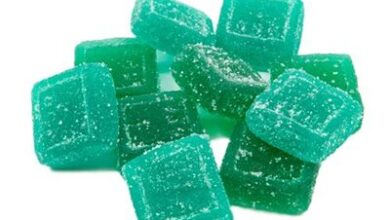
Rust, corrosion, and surface contaminants have long been a challenge for many industries, from automotive manufacturing to heritage restoration. Traditional cleaning methods, like chemical treatments or abrasive blasting, often come with limitations and environmental concerns. However, with the advent of laser cleaning technology, industries now have a powerful, efficient, and eco-friendly solution for maintaining and restoring surfaces.
In this article, we’ll explore how laser cleaning works, its key benefits, and why it is becoming the preferred choice for professionals across various sectors.
What is Laser Cleaning?
Laser cleaning is a process that utilizes high-energy laser pulses to remove unwanted materials from the surface of metals, ceramics, and other substrates. The technology involves using a laser beam to irradiate the surface at a specific wavelength. The beam’s energy then vaporizes contaminants, such as rust, paint, or dirt, leaving the base material untouched and unharmed.
Unlike conventional methods, laser cleaning is contactless, which means it does not wear down the surface or cause damage to sensitive materials. This precision makes it ideal for delicate surfaces and high-value assets.
Key Benefits of Laser Cleaning Technology
Non-Abrasive and Non-Contact: One of the standout benefits of laser cleaning is its non-contact nature. Traditional methods like sandblasting and grinding can be harsh on the surface, leading to potential damage. Laser cleaning eliminates this risk by providing a safe, non-abrasive alternative that preserves the structural integrity of the material.
Environmentally Friendly: Laser cleaning is a green technology that does not rely on hazardous chemicals or produce harmful waste. As a result, it reduces the environmental impact typically associated with cleaning processes, making it a sustainable choice for industries aiming to minimize their carbon footprint.
Precision and Control: With laser cleaning, operators can adjust the laser’s intensity, wavelength, and pulse duration, allowing for precise control over the cleaning process. This precision ensures that only the targeted contaminants are removed, making it ideal for applications that require high levels of accuracy.
Versatility: Laser technology is highly versatile and can be used on various materials, including metals, plastics, ceramics, and composites. From removing rust and paint to cleaning weld lines and mold surfaces, laser cleaning can handle a diverse range of tasks with ease.
Reduced Operational Costs: Although the initial investment in laser cleaning equipment can be high, the long-term benefits significantly outweigh the costs. With minimal maintenance requirements, no need for consumables, and reduced labor costs, laser cleaning can result in substantial savings over time.
Applications of Laser Cleaning
Laser cleaning is revolutionizing surface restoration across multiple industries. Some key applications include:
Rust and Corrosion Removal: Rust and corrosion not only affect the appearance of metals but can also compromise their strength and longevity. Laser cleaning effectively eliminates rust without damaging the underlying metal, ensuring durability and a polished finish.
Paint and Coating Removal: Whether it’s for automotive restoration or industrial maintenance, laser cleaning can strip paint and coatings with precision, preparing surfaces for repainting or further treatment.
Cultural Heritage Preservation: When restoring historical artifacts and monuments, conventional cleaning methods can cause irreparable damage. Laser technology offers a gentle yet effective solution, safely removing centuries-old grime without harming delicate surfaces.
Weld Line Treatment: Laser cleaning can be used to clean weld lines, improving their appearance and removing potential contaminants that could weaken the weld over time.
Why Choose Laser Cleaning Over Traditional Methods?
The decision to use laser cleaning technology over traditional methods boils down to three factors: efficiency, safety, and sustainability. Unlike sandblasting or chemical treatments, which can be hazardous to both the operator and the environment, laser cleaning provides a safe, precise, and eco-friendly alternative.
It’s particularly valuable in situations where contamination needs to be removed without affecting the base material, such as in aerospace, automotive, and electronics industries. Furthermore, laser cleaning is faster and requires less manual effort, making it a more efficient option for large-scale operations.
How Laser Cleaning is Implemented at RenovateRX
At RenovateRX, we leverage state-of-the-art laser cleaning technology to deliver exceptional surface restoration services. Our team uses advanced laser systems that are capable of handling a variety of tasks, from rust removal to delicate surface treatments. Whether it’s restoring industrial machinery or preserving historical landmarks, our laser cleaning solutions are designed to meet the highest standards of precision and quality.
Conclusion: The Future of Surface Restoration
Laser cleaning is not just a trend; it’s the future of surface restoration. As industries continue to seek safer, more efficient, and environmentally friendly cleaning solutions, laser technology is set to become the standard. With its ability to tackle even the toughest contaminants without damaging the surface, laser cleaning offers unparalleled benefits for professionals looking to maintain and restore valuable assets.


